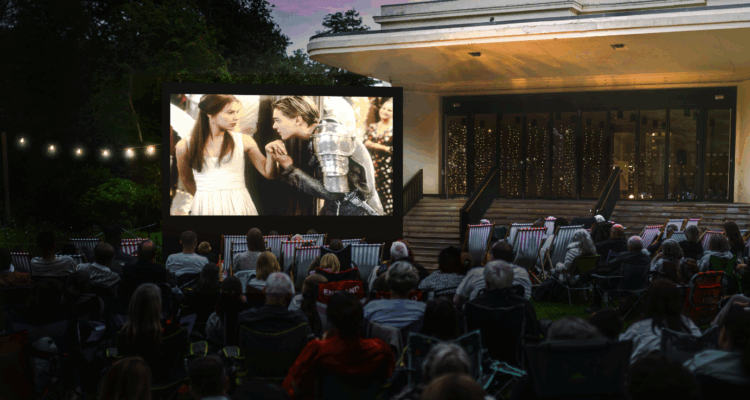Our top 5 tips for reading with young children
When it comes to reading with young children, sometimes it's hard to know where to start or how to make it a fun bonding experience you'll want to share again and again. But don't worry, help is at hand with our top 5 tips!
1. Encourage interaction with the book
Asking children if they'd like to turn the page, lift flaps or otherwise interact with the book is a great way of getting them used to handling books as physical objects. It also helps to make reading fun and immersive, and when kids are feeling more confident with handling books it can really set off their imaginations, as Roanne found when reading with Nathan:
I opened up We’re Going on a Bear Hunt by Michael Rosen to the very first page of the beach and Nathan stopped and said: ‘The beach. Lots of birds. Let’s catch one.’ So he picked one up off the page and said: ‘I’ve got one!’ Then he said: ‘I’ll get my tennis racket,’ and he used another book that I had left out as a tennis racket to catch the birds. Then he said: ‘Let’s catch a crab,’ so he did the same process with the tennis racket book and we said: ‘Wow, well done!,’ when he caught one. Then he said: ‘Let’s put it back in the water,’ so he did.
A bit later on he was making an action and I asked: ‘What are you doing?’ He told me ‘I’m being a crab,’ and he snapped his hands like pincers – he actually was very crab-like in his stance! He was so engrossed in the inspiration that the beach page had presented to him.
2. Point and repeat words
Pointing and repeating words, especially when you can add a bit of variety by experimenting with different volumes, speeds and pitches, encourages children to chatter. When kids are feeling confident enough to chatter, they can really surprise you with how much they are learning even in a short amount of time. One of our project workers found this when reading with Yasmin, whose first language is Turkish:
Today I had a new group member, a two-year-old girl from Turkey. The nursery staff told me that she’s called Yasmin, and that she doesn’t speak English. We read King Jack and the Dragon by Peter Bently. Yasmin chatted to me in Turkish, pointing at the pictures in the book and smiling… I smiled back and made eye contact, repeating words from the book and pointing as well to encourage her to keep chatting.
Towards the end of the book, Yasmin pointed again at a page and said very clearly: “Dragon”. The nursery staff member’s eyes widened in surprise, and we all quickly said, “Well done, Yasmin!” and “Yes, Dragon!”

3. Use funny voices and don't be afraid to sing!
Don't be shy of getting creative - play about with voices for different characters and have a go at singing! Children love it when adults can put aside their authoritative roles for a short time and really let rip. By embracing some silliness, you're also encouraging the kids to do the same, which can lead to some hilarious moments:
I was reading Solomon Crocodile by Catherine Rayner and as the story goes, Solomon annoys all the animals in the river so that they shout “Go away!”at him. When I got to the page with the hippo and his wide-open mouth, as he roars “GO AWAY” at Solomon, two-year-old Finn made a pushing action with his hands towards the book and shouted, “Go away, go away!” at the hippo.
4. Ask open-ended (rather than 'yes' or 'no') questions
Focusing on the feelings of characters in the story can really help children into the world of the book, as they put themselves in the characters' shoes. Open-ended questions are brilliant for starting discussions at different points in the story. Don't be afraid to stop reading and ask something like 'How do you think X feels?' or 'Have you ever felt like that?'. It's really rewarding when you see a child identifying with a character and having the confidence to talk about - and explore - their own feelings, as one of our project workers remembers with Amber:
At the session, the staff said that they themselves had enjoyed it. The story we read involved a little bear afraid of going to sleep on his own. Amber said she was afraid of the dark but wasn’t frightened when she had her teddies with her. The staff showed me that they had added this to Amber’s observation form as they were learning about feelings in nursery. They said it was nice to see the quieter children open up more.
5. Have FUN!
This is the best and most important tip to take away. All the techniques listed here send the message that books are something to be enjoyed, and the more you can show how much fun you're having, the more children will pick up on this message. Even children who find it hard to concentrate can become engrossed for a surprising amount of time, as Roanne found when working with a group where many of the children have learning disabilities:
The week ended on a real high. My last session with a group of two and three-year-olds was great fun, with all the children really loving Mr Tiger Goes Wild by Peter Brown.
After the group had finished, the nursery manager told me that many of the children in the group have learning disabilities and that one boy in particular usually struggles to keep his attention on something for more than a few minutes at a time. He had sat with our group for almost half an hour and was totally immersed in what we were reading, joining in with actions and making lots of tiger noises! The nursery manager said: “I’ve never seen him so engrossed.” He just couldn’t take his eyes off the story.
The fun doesn't stop there! For reading with older children, check out Our top 5 tips for reading with young people and teenagers on The Reader blog.
Share
Related Articles

Open Air Cinema FAQ’s
If you were able to snap up tickets to our brand new Open Air Cinema, check below for any queries…

New Liverpool open air cinema brings movies to the Mansion
NEW FOR 2025: Eight handpicked films will hit the big screen in Calderstones Park this summer as national Shared Reading…

A breath of fresh air! This summer’s outdoor and cultural events at our Calderstones Park home
The Reader serves up a giant scoop of summer arts and entertainment from three special summer garden parties with special…






